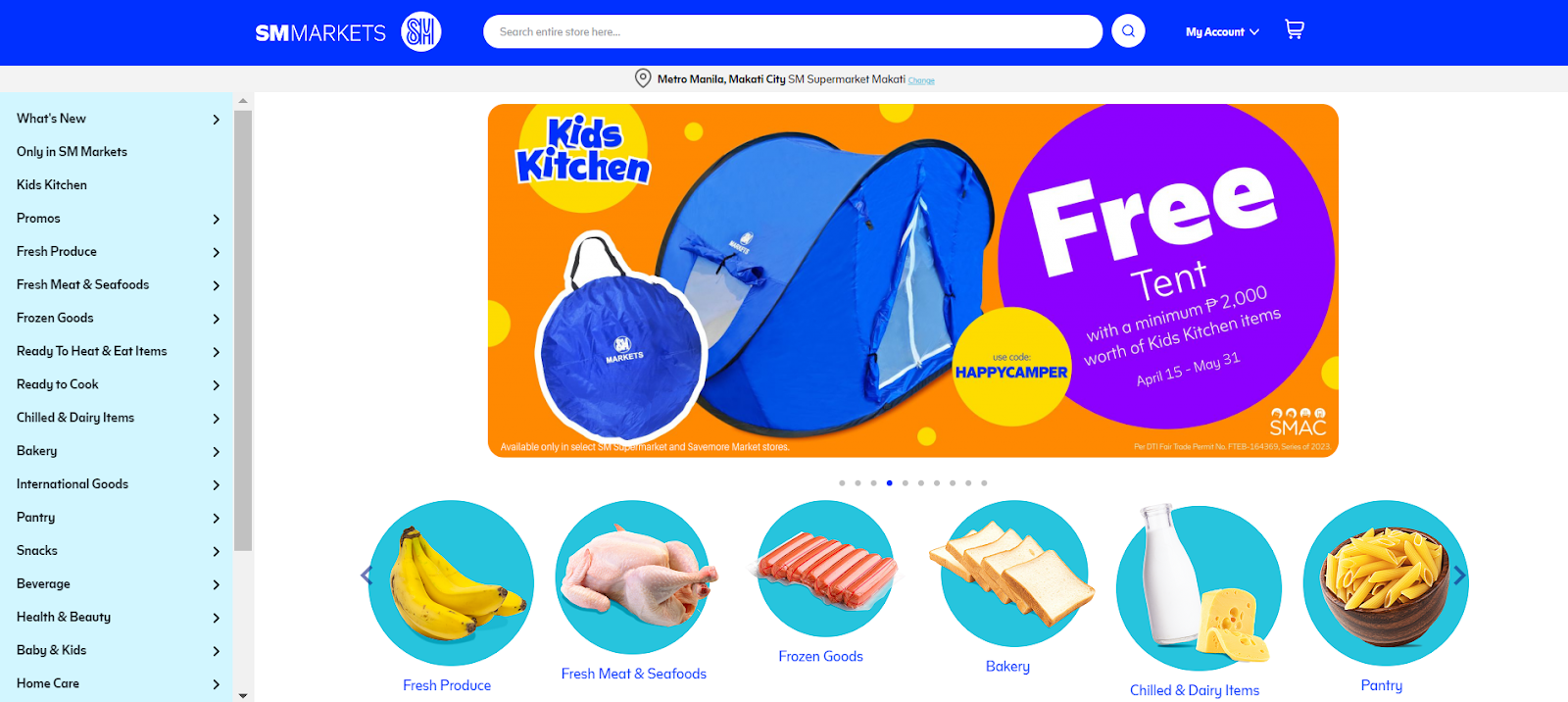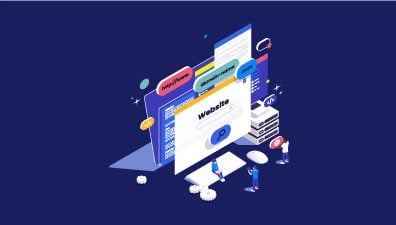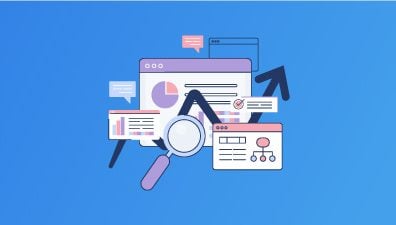In the rapidly evolving world of eCommerce, headless commerce has emerged as a game-changer, offering businesses unprecedented flexibility and agility in delivering exceptional digital experiences. Unlike traditional commerce architectures, headless commerce decouples the front-end presentation layer from the back-end commerce functionality, enabling businesses to deliver personalized and immersive experiences across various channels and devices. Let’s explore the benefits of headless commerce, the potential challenges it presents, and factors to consider when evaluating headless commerce solutions, and examine some successful case studies that showcase its effectiveness.
Table of Contents
- Headless Commerce in Comparison to Traditional Commerce Architectures
- Benefits of Headless Commerce
- Potential Challenges in Implementing and Managing Headless Commerce
- Factors to Consider When Evaluating Headless Commerce Solutions
- Case Studies of Successful Headless Commerce Websites
- Future of Headless Commerce
Headless Commerce in Comparison to Traditional Commerce Architectures
Headless commerce refers to the method of decoupling the front-end (presentation layer) and back-end (commerce functionality) to work on two sides separately, and then integrating them together through APIs, which is very much different from traditional eCommerce architectures. This new approach allows for flexible customization, omnichannel capabilities, faster development cycles, and seamless integration with third-party services, as well as enables businesses to deliver tailored experiences across multiple channels and devices while maintaining scalability and agility. Here are several key aspects that headless commerce differs from traditional commerce architectures.
- Offers greater flexibility: The decoupled nature allows the front-end and back-end to be developed and updated independently. This means that changes to the front end, such as UI improvements or adding new channels, can be made without impacting the underlying commerce functionality. In traditional commerce architectures, changes often require modifications to both the front-end and back-end systems simultaneously.
- Omnichannel capabilities: Headless commerce delivers consistent experiences across multiple channels and devices. By leveraging APIs, companies can create and optimize front-end applications tailored for specific channels while utilizing the same back-end commerce functionality. This provides seamless omnichannel capabilities. In contrast, traditional commerce architectures need help to provide consistent experiences across different touchpoints.
- Allow for greater customization: The decoupled architecture provides businesses with more freedom to customize the front-end experiences according to specific requirements. This flexibility can enhance experimentation, personalization, and tailored user experiences. Traditional commerce architectures may have limitations in customizing the front end due to the tight coupling with the back end.
- Faster development time and cycles: Front-end teams can work independently, releasing updates without waiting for the entire system to be modified. This agility is particularly beneficial for businesses operating in fast-paced and dynamic markets. On the other hand, traditional commerce architectures may have slower development cycles due to the interdependencies between the front-end and back-end.
- Facilitates integrations with third-party services and technologies: The use of APIs allows businesses to connect with external systems such as marketing automation tools, analytics platforms, CRM, and ERP systems easily. These enhanced integration possibilities enable businesses to leverage external services seamlessly. In contrast, traditional commerce architectures may face challenges in integrating with external systems.
Benefits of Headless Commerce
Enhanced Flexibility and Agility
Headless commerce offers several benefits, primarily focused on enhanced flexibility and agility for businesses. One of the key benefits of headless commerce is the decoupling of the front-end and back-end systems. By separating these components, businesses have the freedom to choose the best-of-breed solutions for each layer independently. They can select the most suitable front-end technologies for delivering rich user experiences while leveraging robust and specialized back-end commerce functionality. This decoupling empowers businesses to make technology decisions that align with their specific requirements and goals.

Another benefit of headless commerce is the ease of scalability and adaptability to changing business needs. With the decoupled architecture, businesses can scale their front-end and back-end systems independently. They can add new front-end channels or applications without disrupting the existing back-end infrastructure, allowing for seamless expansion and improved customer experiences. Additionally, as business needs evolve, organizations can adapt and integrate new technologies or services into their commerce ecosystem more efficiently.
Headless commerce also enables businesses to experiment and innovate without disrupting the entire commerce ecosystem. Since the front-end and back-end are decoupled, updates or changes to the front end can be implemented without affecting the underlying commerce functionality. This flexibility encourages businesses to try new ideas, test different user experiences, and iterate quickly. It fosters a culture of innovation and allows organizations to respond rapidly to market demands and customer preferences.
Improved User Experience
Headless commerce brings significant improvements to the user experience, resulting in enhanced customer satisfaction and engagement. These modifications include seamless omnichannel experiences, faster load times & improved performance, personalization & customization capabilities, and enhanced mobile experiences & responsive design.
One of the primary benefits is the ability to deliver seamless omnichannel experiences. With headless commerce, businesses can create consistent and cohesive experiences across multiple channels, such as websites, mobile apps, voice assistants, and more. Each front-end application can be optimized for its specific channel, allowing customers to interact with the brand seamlessly, regardless of the device or touchpoint they choose. This unified approach to the user experience helps build brand loyalty and drives customer retention.

Another benefit of headless commerce is faster load times and improved performance. By decoupling the front end from the back end, businesses can optimize each layer independently for optimal speed and performance. This results in reduced page load times, smoother navigation, and a more responsive user interface. Fast and efficient experiences contribute to a positive user experience and can significantly impact conversion rates and customer satisfaction.
Headless commerce also enables personalization and customization capabilities. Businesses can leverage data and customer insights to tailor the user experience to individual preferences, behavior, and context. Personalization can be applied across different channels and touchpoints, allowing businesses to deliver targeted content, product recommendations, and offers. The ability to create tailored experiences enhances customer engagement, drives conversions, and fosters a sense of connection with the brand.
Additionally, headless commerce enables enhanced mobile experiences and responsive design. As mobile usage continues to rise, businesses must prioritize delivering exceptional mobile experiences. With headless architecture, front-end applications can be specifically designed and optimized for mobile devices, ensuring a seamless and user-friendly experience. Responsive design techniques can be implemented to automatically adapt the user interface to different screen sizes and resolutions, further improving usability and engagement.
Streamlined Development and Maintenance
Headless commerce offers streamlined development and maintenance processes, leading to faster time-to-market, simplified development, easier integration, and lower maintenance costs.
One of the key benefits is the faster time-to-market for new features and updates. With a headless architecture, front-end and back-end development can occur simultaneously, allowing teams to work independently and deliver updates more efficiently. This decoupled approach enables businesses to introduce new features, improvements, and enhancements to the customer experience more rapidly, giving them a competitive edge in the market.

The development process is also simplified with a modular architecture in headless commerce. The decoupled nature allows for a clear separation between the front-end and back-end components, making development more focused and manageable. Development teams can work on their respective areas of expertise without dependency on each other, resulting in faster development cycles and increased efficiency. This modular approach also promotes code reusability and maintainability.
Headless commerce facilitates easier integration with third-party services and APIs. The decoupled architecture allows businesses to connect with external systems, such as payment gateways, marketing automation tools, or analytics platforms, through APIs. This enables the seamless integration of additional functionalities and services, expanding the capabilities of the commerce ecosystem. Businesses can leverage best-of-breed solutions and adapt to evolving market trends by easily integrating new services without disrupting the entire system.
Lower maintenance costs and reduced technical debt are additional benefits of headless commerce. The modular architecture and independent development of the front-end and back-end allow for targeted updates and maintenance. Bug fixes or enhancements can be applied to specific components without impacting the entire system, reducing the risk of introducing new issues. This targeted approach to maintenance results in lower costs and minimizes technical debt, ensuring a more stable and reliable commerce platform over time.
Increased Conversion and Revenue Opportunities
Headless commerce offers increased conversion and revenue opportunities by enabling businesses to leverage emerging technologies, improve SEO and discoverability, conduct A/B testing, and seamlessly integrate with marketing tools and analytics.
One of the key benefits is the ability to leverage emerging technologies. With a headless architecture, businesses can easily integrate and adapt to emerging technologies such as Internet of Things (IoT) devices and voice assistants. This opens up new channels and touchpoints for customers to interact with the brand, providing additional conversion and revenue opportunities. By staying at the forefront of technological advancements, businesses can engage customers in innovative ways and drive more sales.

Headless commerce also improves SEO and discoverability. The decoupled architecture allows businesses to optimize the front end specifically for search engines, enhancing website performance, loading speed, and content indexing. This optimization boosts search engine rankings, making it easier for potential customers to find the business and its products. Improved SEO and discoverability lead to increased organic traffic, higher visibility, and ultimately, more conversion opportunities.
A/B testing and optimization are made easier with headless commerce. Businesses can conduct A/B tests to compare different variations of the front end, such as layouts, designs, or user experiences, to determine which performs better in terms of conversion rates. This data-driven approach allows for continuous optimization, enabling businesses to refine their strategies, increase conversion rates, and maximize revenue.
Seamless integration with marketing tools and analytics is another benefit of headless commerce. The decoupled architecture facilitates the integration of marketing automation tools, customer relationship management (CRM) systems, and analytics platforms through APIs. This integration enables businesses to gather valuable data, track customer behaviors, and make data-driven decisions. By leveraging insights from marketing tools and analytics, businesses can optimize their marketing campaigns, personalize customer experiences, and drive higher conversion rates.
Empowering Front-End Creativity
Headless commerce empowers front-end creativity by providing design freedom and flexibility, enabling rapid prototyping and iterative improvements, supporting the creation of immersive and engaging experiences, and offering compatibility with progressive web apps (PWAs) and mobile applications.
One of the primary benefits of headless commerce is the design freedom and flexibility offered by headless commerce. With the separation of the front-end and back-end, businesses have the freedom to create unique and visually stunning user interfaces. Designers can leverage their creativity without being limited by the constraints of the underlying commerce functionality. This flexibility allows for innovative and customized designs that align with the brand identity and user experience goals.

Headless commerce also enables rapid prototyping and iterative improvements. The decoupled architecture allows front-end teams to quickly prototype new designs and functionalities without dependencies on back-end development. This iterative approach fosters an environment of continuous improvement, where ideas can be tested, refined, and implemented more efficiently. The ability to iterate rapidly enables businesses to stay responsive to user feedback, adapt to changing market demands, and optimize the customer experience.
The decoupled nature of headless commerce facilitates the creation of immersive and engaging experiences. Front-end developers can leverage modern technologies such as JavaScript frameworks, APIs, and microservices to deliver rich and interactive user experiences. Businesses can incorporate multimedia content, animations, personalized recommendations, and other engaging elements to captivate and retain users. This focus on creating immersive experiences enhances customer satisfaction, increases engagement, and ultimately drives conversions.
Headless commerce also supports the development of progressive web apps (PWAs) and mobile applications. PWAs offer a native app-like experience on web browsers, providing fast and seamless interactions, offline capabilities, and device integration. With headless architecture, businesses can develop PWAs and mobile applications that leverage the same back-end commerce functionality. This approach ensures consistency across channels and allows users to access the brand from various devices, enhancing convenience and accessibility.
Potential Challenges in Implementing and Managing Headless Commerce
Implementing headless commerce offers numerous benefits, but it also brings forth its own set of challenges that businesses need to navigate. Understanding and addressing these potential challenges is crucial to ensure a successful implementation and effective management of a headless commerce architecture.
Technical Complexity
One of the primary challenges in implementing headless commerce is dealing with the technical complexity involved. With a decoupled front-end and back-end, integration and communication between different systems become essential. Developers need to possess a strong understanding of APIs, microservices, and data synchronization to ensure seamless connectivity and functionality across various platforms.
Customization and Maintenance
While headless commerce offers flexibility, customizing the user interface and implementing specific features can be challenging. Since the front end is detached from the back end, businesses need to invest resources in developing and maintaining custom interfaces and experiences. Regular updates, bug fixes, and ongoing maintenance require careful coordination between development teams and business stakeholders.
Content Management
Managing content efficiently and consistently across multiple channels can be complex in a headless architecture. With different front-end applications consuming content from various sources, businesses must establish a robust content management system (CMS) strategy. This involves structuring content in a way that is modular, reusable, and easily accessible by different front-end applications.
Performance Optimization
Headless commerce relies on multiple API calls and data exchanges, which can impact performance if not optimized effectively. Slow load times and latency issues can result in a poor user experience. Implementing caching mechanisms, optimizing API calls, and leveraging content delivery networks (CDNs) are crucial strategies to enhance performance and ensure a seamless user experience.
Team Collaboration and Skill Sets
Implementing and managing headless commerce requires collaboration between different teams, including developers, designers, marketers, and content creators. Effective communication, coordination, and cross-functional collaboration are vital to ensure alignment and successful implementation. Organizations may also need to invest in upskilling or hiring professionals with the necessary skill sets to navigate the complexities of a headless architecture.
Cost Considerations
While headless commerce offers numerous benefits, it is essential to consider the associated costs. Building and maintaining custom front-end applications, managing multiple APIs, and investing in the infrastructure required for scalability can incur additional expenses. Businesses need to carefully evaluate the return on investment and weigh the costs against the expected benefits to make informed decisions.
Factors to Consider When Evaluating Headless Commerce Solutions
When evaluating headless commerce solutions for your business, it’s crucial to consider several factors to ensure you choose the right platform that aligns with your goals and requirements. Here are some key factors to consider during the evaluation process:
- Architecture and Flexibility: Assess the flexibility of the headless commerce solution and its architecture. Determine if it supports various front-end frameworks and technologies, allowing you to build custom experiences tailored to your brand and customer needs. Consider whether the solution offers APIs and integration capabilities to connect with other systems and third-party services.
- Scalability and Performance: Evaluate the scalability and performance capabilities of the headless commerce solution. Consider factors such as the ability to handle high traffic volumes, support for caching mechanisms, and content delivery networks (CDNs) to ensure fast and responsive user experiences. Look for solutions that can scale your business growth and handle increased transaction volumes.
- Developer Experience and Tooling: Consider the developer experience and tooling provided by the headless commerce solution. Evaluate the availability of comprehensive documentation, developer resources, and support. Look for solutions that offer a robust set of development tools, debugging capabilities, and testing environments to streamline the development and maintenance processes.
- Content Management: Assess the content management capabilities of the headless commerce solution. Determine if it provides a user-friendly content management system (CMS) that allows non-technical users to create, manage, and publish content across different channels. Consider if the solution supports content personalization, localization, and versioning to deliver targeted and relevant experiences to your customers.
- Integration Capabilities: Evaluate the integration capabilities of the headless commerce solution. Determine if it supports seamless integration with your existing systems, such as CRM, ERP, inventory management, and marketing automation tools. Consider the availability of pre-built connectors or APIs that facilitate easy data exchange and synchronization between different systems.
- Security and Compliance: Ensure that the headless commerce solution prioritizes security and compliance. Evaluate the platform’s security features, such as encryption, user authentication, and data protection measures. Consider if the solution adheres to industry standards and compliance regulations, such as PCI-DSS for payment processing and GDPR for data privacy.
- Total Cost of Ownership: Assess the total cost of ownership (TCO) associated with the headless commerce solution. Consider factors such as licensing fees, hosting costs, development and customization expenses, and ongoing maintenance and support costs. Evaluate if the benefits and features offered by the solution justify the investment and align with your budgetary considerations.
- Vendor Support and Reputation: Research the reputation and track record of the headless commerce solution provider. Consider factors such as customer reviews, case studies, and references to assess the vendor’s reliability, support responsiveness, and commitment to ongoing product enhancements and updates. Engage in discussions with the vendor to evaluate their level of support and ensure they can meet your business requirements.
- Mitigate Risks: Assess the solution provider’s track record for reliability and stability, as well as their commitment to ongoing support and updates. Look for solutions that offer robust backup and disaster recovery mechanisms to protect your data and ensure business continuity. Evaluate the solution’s compliance with security standards and its ability to address potential vulnerabilities. Additionally, consider the scalability and flexibility of the solution to adapt to future changes in your business requirements. Conduct thorough risk assessments and engage in discussions with the solution provider to address any concerns and develop mitigation strategies. By proactively identifying and mitigating risks, you can ensure a smoother implementation and long-term success of your headless commerce solution.
Case Studies of Successful Headless Commerce Websites
There are a few headless eCommerce software that merchants can consider. Here, we give examples from the 3 most common Headless software.
SM Market – Magento Headless Case Study
Headless commerce has helped SM Markets (Supervalue, Inc.) overcome challenges and achieve success in its online retail operations. Prior to implementing headless commerce, SM Markets faced shortcomings in their website, resulting in a subpar user experience and performance. To address this, they partnered with us, Magenest, a capable Adobe partner to improve their Magento 2 system and enhance essential services.
The solution provided by Magenest involved refactoring the existing Magento 2 system, standardizing the code, and removing bugs to deliver a better user experience. Additionally, a powerful mobile app was developed to streamline stock operations within supermarkets, enabling managers to serve orders and manage stock availability with precision and speed. This improved efficiency and resource allocation, ultimately enhancing the customer experience.

Convenience was also prioritized through the implementation of an affiliate pickup system. Administrators were given centralized control to adjust the opening and closing times of hubs, improving convenience for users by providing up-to-date information about hub operations. Advanced chatbot integration was deployed to assist users with various requests, such as opening accounts, obtaining product information, suggesting relevant products, and tracking orders. To further enhance the customer experience, a new user interface (UI) design was implemented, optimized for grocery shopping, and deployed as a progressive web app (PWA) for both PC and mobile devices. This unified the shopping experience across platforms, creating a seamless omnichannel system.
The launch of the new website and system upgrades resulted in a spectacular success for SM Markets. The optimization and enhancements provided by headless commerce significantly improved the eCommerce framework, leading to a top-tier customer experience, efficient order fulfillment, and a substantial increase in the number of placed orders and revenue.
The case study of SM Markets demonstrates the transformative impact of headless commerce in addressing challenges, improving user experience, and driving revenue growth for businesses in the retail sector.
Allbirds – Shopify Headless Case Study
Allbirds, a popular shoe brand, faced challenges in managing its growing product assortment, global presence, and personalization efforts. They needed a flexible solution to handle different categories, variants, and product availability across countries while delivering a fast site experience. To address these needs, they decided to explore headless architecture.
Allbirds’s Web team considered Shopify’s Hydrogen framework and Oxygen hosting, which had already been successfully used by their Mobile App team for their iOS app. By adopting Hydrogen, the two teams could share a single system’s architecture, design documentation, and learnings. They initially used Hydrogen to build a store locator feature that bridged the gap between their online and brick-and-mortar stores.

The implementation process was efficient, with the team launching the store locator feature within three and a half weeks. The developer experience, built-in hosting, and latest tooling provided a streamlined workflow and made the architecture engaging to work with. With the successful launch in the United States, their next project is to convert the product page to Hydrogen.
The Allbirds team is impressed with the results and believes that Hydrogen will help them achieve their goals of improving site performance and delivering dynamic, personalized experiences for every customer. They are excited about the possibilities that Hydrogen offers and anticipate even greater experiences in the future.
This case study highlights how Allbirds leveraged Shopify’s Hydrogen for headless commerce, enabling them to overcome challenges, enhance flexibility, and deliver a better user experience across their online and offline channels.
Burrow – BigCommerce Headless Case Study
Burrow, a direct-to-consumer furniture store, faced challenges as their sales grew and its existing eCommerce platform became limiting. They needed a powerful backend solution that could scale with their business and allow for easy customization of their site. Agility and creativity were key to their marketing strategy, and they wanted to avoid relying on developers for simple changes.

To address these challenges, Burrow chose a headless approach, selecting BigCommerce as their scalable backend system. This freed up their team to focus on marketing updates, while also providing the flexibility to use a custom CMS on the front end for unique and tailored experiences. The results were impressive, with a 30% increase in conversion rate within two months and a 50% improvement in site speed and performance.
The headless solution empowered Burrow not only operationally but also creatively. They were able to drive platform modernization and create a great digital experience across multiple channels using a headless CMS. This case study highlights how Burrow leveraged headless commerce to overcome limitations, achieve better performance, and unlock creative freedom to enhance their customer experience.
Future of Headless Commerce
The future of headless commerce is poised to bring exciting advancements and transformative changes to the eCommerce landscape. Here are some emerging trends and innovations that are shaping the future of headless commerce:
- Microservices Architecture: Headless commerce is moving towards a more modular and scalable approach with microservices architecture. This allows businesses to break down their systems into smaller, independent components, enabling greater flexibility-agility in building-managing their commerce infrastructure, while also cutting down the costs as businesses only need to purchase necessary tools.
- API Economy: The rise of the API economy is playing a crucial role in the evolution of headless commerce. APIs enable seamless integration between different systems, allowing businesses to leverage best-of-breed solutions and create connected ecosystems of services, applications, and data sources, thus selling paid versions of APIs will be a viral business much sooner than anticipation.
- Voice Commerce: Voice assistants and smart speakers are gaining popularity, and voice commerce is becoming an emerging trend in the headless commerce space. With the advancement of natural language processing and voice recognition technologies, businesses can provide voice-enabled shopping experiences, allowing customers to make purchases and interact with brands using voice commands.
- Augmented Reality (AR) and Virtual Reality (VR): AR and VR technologies are transforming the way customers experience products and make purchasing decisions. In the headless commerce realm, these technologies can be integrated to offer immersive product visualization, virtual try-on experiences, and virtual showrooms, enhancing customer engagement and reducing the barriers to online shopping.
- Progressive Web Apps (PWAs): PWAs continue to gain momentum as a cost-effective alternative to native mobile apps. With headless commerce, PWAs can be developed independently from the backend, providing fast and responsive mobile experiences, offline functionality, and app-like features without the need for separate development and maintenance.
- Personalization and AI-driven Experiences: Headless commerce enables businesses to leverage artificial intelligence (AI) and machine learning algorithms to deliver highly personalized and relevant experiences to customers. AI can analyze vast amounts of customer data, predict preferences, and provide tailored recommendations, ultimately enhancing customer engagement and driving conversions.
The implications of these trends and innovations for the future of eCommerce and digital experiences are significant. Headless commerce empowers businesses to adapt quickly to changing customer expectations, embrace emerging technologies, and deliver seamless and immersive experiences across multiple channels. It enables brands to create unique and differentiated experiences that drive customer loyalty and generate revenue. As technology continues to advance, headless commerce will play a pivotal role in shaping the future of eCommerce, offering limitless possibilities for businesses to innovate and thrive in the digital landscape.
Conclusion
As the eCommerce landscape continues to evolve, headless commerce stands at the forefront of innovation, empowering businesses to adapt, customize, and optimize their digital experiences to meet the ever-changing demands of customers. By leveraging the benefits of enhanced flexibility, streamlined development, and improved user experiences, businesses can gain a competitive edge and drive growth in the digital realm. With careful consideration of the challenges, factors, and real-world case studies, businesses can make informed decisions and harness the power of headless commerce to shape the future of their online ventures.
If you are seeking to elevate your eCommerce platform, this advanced technology is certainly worth considering. Our team of Magento-certified developers at Magenest possesses extensive knowledge of the latest technology and market trends. We are enthusiastic about assisting you in building a robust headless Magento Commerce store, so do not hesitate to contact us!











